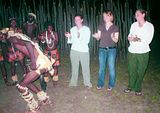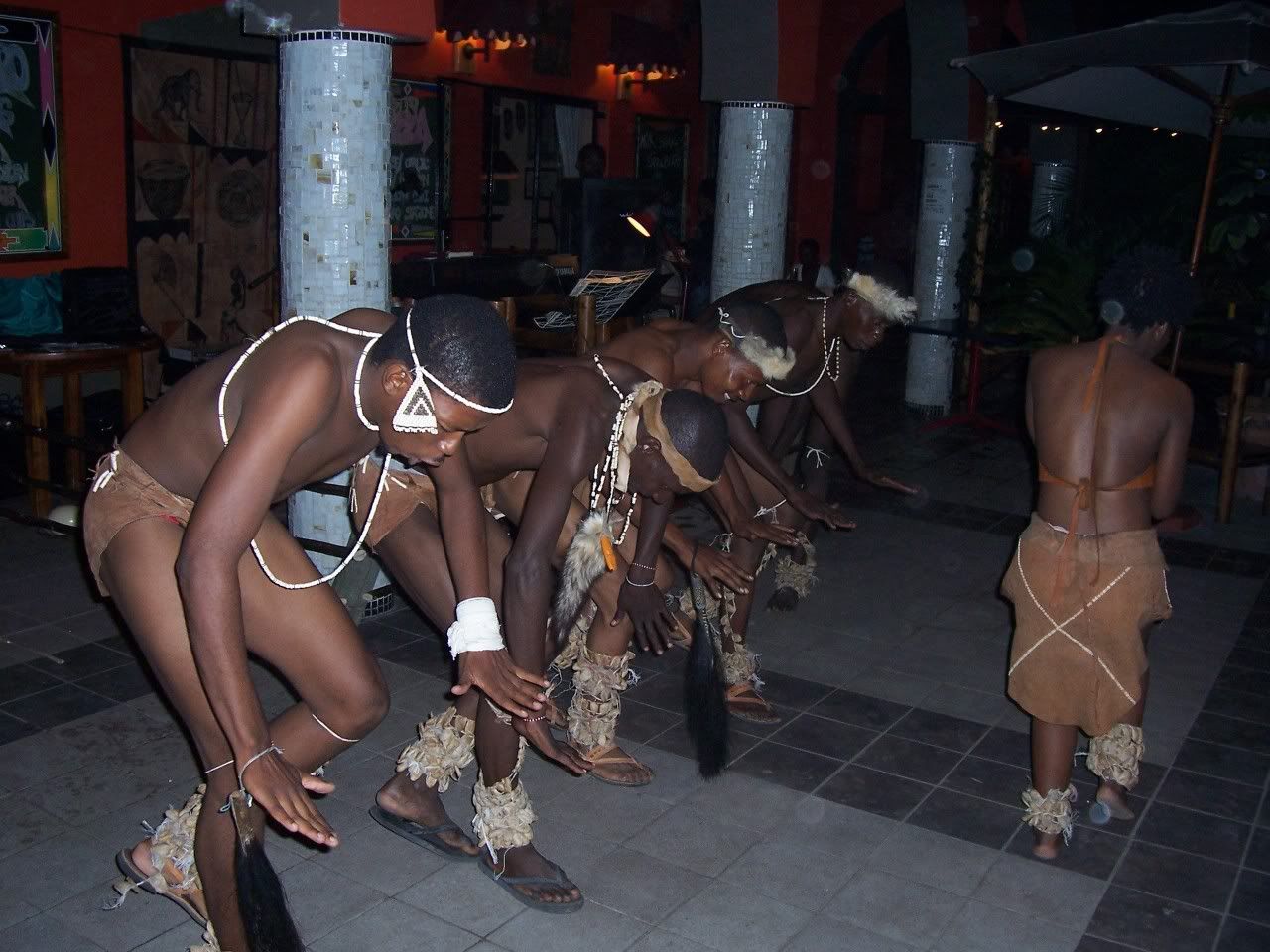Wednesday, October 28, 2009
Monday, December 04, 2006
Qani's Quotations - Part 1
1. The story that I heard from my father, who heard it from his father, is that we San came from the west. After the great God made them, they were in a good place in the west - the name of which my father never told me. But, soon after they were created, there were wars which forced my forefathers to leave that nice place of theirs and seek other places of rest. They wandered until they found this place and eventually I was born and found I was in the Kalahari Desert.
2. Our esteem for meat is so high that we place the hunter at the center of the system of practices and observances that regulate our little societies - in which all men are hunters. A man is defines by his hunting. A male who does not hunt remains a kid and may not marry, for how can he expect to take a wife if he cannot bring meat home for his family family and parents-in-laws. Where will he get skins with which to cloth his wife and kids?
Friday, October 13, 2006
Season's of the Kalahari
In the dry months, April to September, ostrich eggs are used to store water. From Qani's perspective, "Our short autumn, which comes in April, is the best of all the seasons. Apart from a rare vagrant shower, the heavy rains are passed, but there is still water in small pans scattered about our hunting area."
"The big rains have driven away the great heat of spring and early summer. The biting cold that lengthens winter nights has not set in."
Monday, September 25, 2006
Qani Update

Expect more from Qani anytime soon. She has had a busy last few months peforming many a dance show, producing a 6 song CD and organizing a video shoot that should happen next week.
She tells me she is writing and hopes to start an email account so she can be directly in-touch we you. The picture is Qani on mobile safari in Moremi Game Reserve, late June. That is our winter.
Monday, June 19, 2006
Fire Has Life

Qani believes that fire can motivate and lift the spirit - "we always make a big fire because we believe that fire is life. Fire can heal." Herbs are also used for healing. When someone is sick, "we dance around the fire singing our traditional songs - requesting help from God(Uwe) to give us strength to heal the ill person."
The singing and dancing is slow, rhythmic and quite. From Qani's point of view, "we are singing without making a lot of noise, so that the song can inspire the patient until he stands up and tries to dance on his own.
The San are a nomadic people. If an ill person is too sick to move on, they are left behind. If they recover, they will follow to their new home. According to Gani - in her culture, ancestors are never talked about.
Tuesday, May 30, 2006
Why I Perform Traditional Dance
Qani started traditional dance when she was 6 years old, that was in 1988. Her dancing is divided into 3 themes: hunting dance, healing dance and play/game dance. Qani did some dancing when she was in school.
She left school early, but was given assistance by a Norwegian couple. They helped her to continue with reading and writing. After they left and returned to Norway, Qani was more on her own. It was "then I started thinking of promoting our culture and making some beads. As I have realized that we have lost our culture - that's why I have found it necessary to promote it."
Qani wants other San to benefit from her dancing and talking about San Culture. "My aim, as youth of this country, is to inform others and educate them so that we can be a proud nation with our heritage. "
Saturday, May 13, 2006
Friday, April 21, 2006
Qani Xiite - demonstrating San Dance
Telling the story of San Culture
Qumco. xaxi. The richness of the San Culture is being explained in words, song and dance to tourists in Maun by Qani Xiite, of the Qungha tribe, who comes from Kacgae village near Ghanzi. Based at the Afro Trek Safari office at the Sedia Riverside Hotel, Qani – dressed traditionally in the way of the desert - is holding tourists enthralled as she speaks, and then performs San traditional dances before teaching them the intricate dance steps.
Hotel managing director Janet Maruza said a decision had been taken over several months to provide a more cultural aspect for visitors to Maun – “visitors are very impressed with this introduction to the culture of the San and Botswana.”

Qani Xiite Live
Qani and the Babouche Dancers entertain over 100 members of Tour d'Afrique, who are doing a 12,000km bike rise from Cairo to Cape Town. Along with the dancing, Qani also explained how to win the right to marry a San woman - going into the bush by yourself and killing a lion with a bow and arrow.














